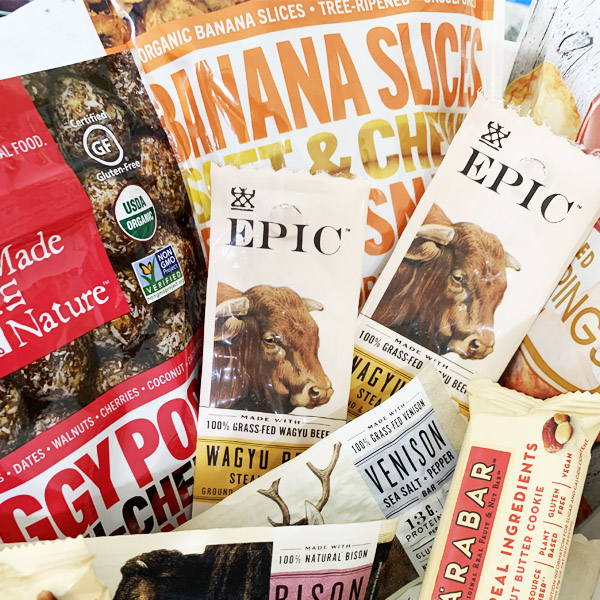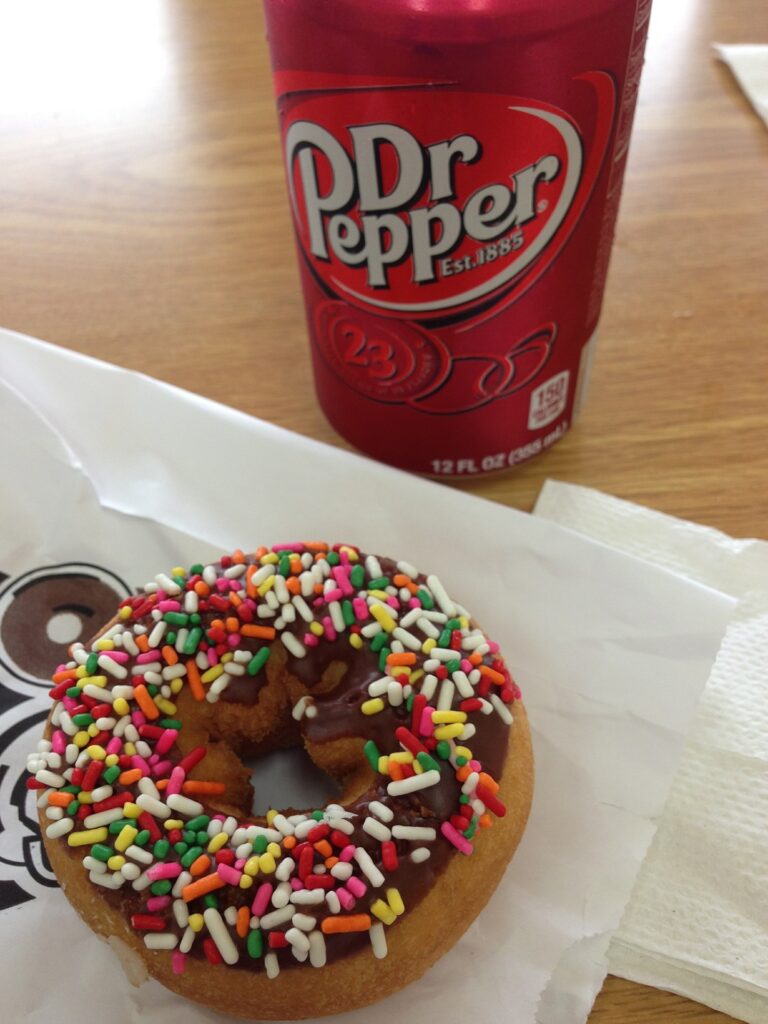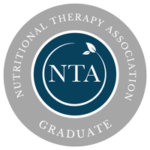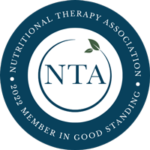This post contains affiliate links. As an Amazon Associate, I earn from qualifying purchases. Should you click an affiliate link and make a purchase, I may make a small commission at no extra cost to you. You can read more about it here.
In this post, I’m going to break down processed foods and give you a new way of looking at them. We’ll also cover a few easy steps to start eating healthier that you can start using yesterday. And how to keep your idea of healthy living balanced with real life.
And I’ll give you my two cents on “diets” and what our diet looks like.
So Many Diets to Choose From
With so many different diets out there how do you choose the right one for your family? Is there one that’s better than the other? Should you choose Keto, or maybe Paleo? Carnivore? Vegan? Vegetarian?
It’s enough to make you want to pull your hair out with information overload! Why make it so complicated?!
Well, I’m going to say something that I hope will help you stay afloat in a sea of too much head information on diets. Please be aware, this is just my opinion as a Registered Nurse and a Nutritional Therapy Practitioner. I’m not going to tell you one diet is better than the other because I don’t think you have to choose just one diet to follow. In fact, I don’t think being on one diet forever is even healthy for your body.
Am I even allowed to say that? Pretty sure it’s going to ruffle someone’s feathers.
Diets for healing
I do believe there are aspects of each diet that are important and you may need to use one or the other for short periods at different times in your life depending on your current health issues. What works for one person may not work for another, too. My husband, for example, tends to do better with more meats in his diet, whereas, I have to have my veggies included with every meal in order to feel balanced.
This may be true for your family, as well as ours, but we can’t be on just one type of diet. We have one kid with food allergies and sensitivities and his diet differs slightly from his sisters’. Her diet at this time is geared more towards strengthening her teeth, as is mine.
Overall, we tend to incorporate aspects of several different diets into our lifestyle depending on the season of healing we are in. It’s about knowing what to provide your body with what it needs, when it needs it. Like when we’re working on gut health, we greatly increase our bone broth intake as well as fermented foods. Yup, my kids eat sauerkraut (they love it on their burgers!). And while we’re working on strengthening our teeth, we eat more eggs and raw cheeses, and we limit the kinds of grains, nuts and seeds we eat for a time.
Strictly sticking to one diet type can greatly affect the nutrients your body gets or doesn’t get. That’s why a variety of properly prepared foods is most important in providing your body with all the nutrients it needs. And they need to be real foods, whole foods. Ideally, that means unprocessed or minimally processed, preferably with no ingredient label or if they do have a label then only with ingredients you recognize.
The Breakdown of “Processed Foods”
I realize that never eating processed food is unrealistic in this day and age for the majority of people. We’ve certainly had our fair share! And saying that all processed food is unhealthy just isn’t accurate either. Because, technically, the majority of our food is “processed” to some extent. Unless you’re picking it off the tree itself and eating it right there, even your bagged apples at the grocery store are “processed” because they’ve been placed in a bag. The term “processed” is often used very loosely and definitions tend to differ depending on who you’re talking to. Looking at the degree to which a food is processed is a bit more helpful in choosing which ones are better for your body.
Here’s a bit of a breakdown to help you start thinking about how much “processing” has been done to your food:

- Unprocessed or minimally processed – foods that are still in their natural state or at least very close to it. Foods like frozen fruits and veggies, plain yogurts, or meats such as plain hamburger meat, steak, etc.
- Processed foods – these are foods that have had ingredients added to them such as salt, sugar, or fats. Canned fruits and veggies, packaged jerkies, and some breads are examples that fall into this category.
- Ultra-processed foods – these are the foods that have dyes, stabilizers, emulsifiers, and preservatives in them. There’s very little of the natural food left in them. They’re typically high in calories and low in any nutrients. Foods such as cookies, sodas, chicken nuggets, most breads, breakfast cereals and pastries are some examples. This is the food group to try to stay away from.
For the sake of ease in this article, when I say “processed” I’m going to be talking about the ultra-processed foods for the most part as the ones to avoid.
Easy Steps to Start Eating Healthy
Listed below are six easy steps to start eating healthier. They’ll help to simplify what it is you’re looking for when you go grocery shopping. To avoid overwhelm, don’t try to tackle them all at once. Start with number one. Once you have the hang of it then move on to number two and so on:
- Check labels and look for ingredients you actually recognize. If you don’t recognize it, don’t get it. The fewer the ingredients the better.
- Buy foods that have no ingredient label – fruits, veggies, unprocessed whole meats.
- Try new foods! Is there a new veggie you can incorporate into your diet? Or a new fat such as ghee, tallow or lard. Try fermented foods such as sauerkraut or kefir.
- Be sure to eat the rainbow! Different colors mean different nutrients! And don’t eat all raw veggies, many are more easily digested when cooked.
- Instead of hitting the grocery store every week, check out your local farmers market more often.
- Pay attention to how you feel after eating. Some foods don’t affect us right away, but can a few hours later. If you suspect a food is bothering you, try eliminating it from your diet for a time to see how you feel without it. When you add it back in, be sure to pay attention to how you feel with it back into your diet.
Here’s an infographic that helps you see what some of those crazy long words on the back of labels really mean and what effect they have on your body. These are typically ones you’ll find in the ultra-processed foods. It’s not an all inclusive list, but it’s a good starting point on what to avoid. Here’s another great article that goes more in depth as to some common food additives that should be avoided and why. Just another great reason why buying foods with ingredients you recognize or no labels at all is just plain easier!
Finding the Right Foods For What Your Body Needs
One of the “diets” that we’ve incorporated many different components of into our lifestyle over the past few years is the Weston A. Price diet. It originally started as me trying to find a way to strengthen my daughter’s teeth due to tooth decay. Please don’t think I’m against dentists. I just couldn’t swallow the idea that our only option was to fill in her baby teeth that had some decay and seal the rest to prevent anything else from happening. I wanted to know why it was happening even though we practiced good oral hygiene with her. Without some sort of change, what was going to stop it from happening to her adult teeth? How could I actually strengthen her teeth from the inside out, without the use of man made treatment options? Surely, there had to be a natural way to do it.
And that’s when the research began. It led me first to the book Cure Tooth Decay by Ramiel Nagel, which falls in line with the Weston A. Price diet, although a bit more strict. Finally, I felt like there was a bit of hope, something that we could do to take control of our own dental health.
But to be honest, it was completely overwhelming when I started reading it. It felt unrealistic to overhaul our diet in the way it recommended. Half the foods I had no clue how to make and some I hadn’t even heard of! The ways they were cooked, or not cooked, were foreign to me as well. Whether we would even have access to any of them was a whole other question.
Baby Steps

So we took it in small steps. There were aspects we were able to incorporate that actually helped to halt any further decay on her teeth. We cut out the processed foods, candies, juices, and improperly prepared grains. We started doing more eggs and raw cheeses, and ate more soups to include bone broth into our diet.
Tough initially, but completely doable.
We then started a fermented cod liver oil blend and concentrated butter oil supplement for a real kick in nutrient levels for her. That one was a bit trickier to get into her, to be honest. As an adult, the capsule form was fine, but not for a kiddo who can’t swallow those yet. So we bought the chocolate gel form of the supplement, put a bit of chocolate coconut oil on it and my daughter would swallow it down like a champ. Now she doesn’t even need the chocolate coconut oil and takes it without any issues, like gagging or vomiting! ***Side note … do you see the baby steps in action? First the chocolate coconut oil was needed to get used to the supplement and then it wasn’t. It’s okay to get creative when transitioning your kiddos to new things!
We also dove into changing out our toothpastes, but I’ll do another post on that with the ones that we like the best and have seen the most improvement with.
Now, I will say, we didn’t do all of the above in one day. We did it in steps. However, about this same time, we found out my son had an egg and milk allergy and, therefore, our time frame for easing into things was shortened considerably. Many things we did have to get rid of all at once due to the allergies. And obviously he couldn’t do the eggs and dairy portion of the diet, which made it a bit trickier. For a short time, we didn’t do any eggs or dairy in the house as we adjusted to this new diagnosis of food allergies.
Never a dull moment for us, mamas, eh?!
The “Diet” Explained
So what is the Weston Price diet then?
It has many similarities to some of the other major diets, but I don’t really think of it as a “diet”, per se. It’s a way of eating that just makes sense. It’s simple. Traditional. It’s not limiting. There’s no calorie counting, no points to keep track of.
And the part that has the nurse nerd in me excited is that it’s backed by studies that span more than just a few months on a few test subjects. And it’s still constantly testing the founder’s assessments against modern day studies conducted to make sure the evidence matches up. Talk about keeping it accountable, eh?
Price, who was a dentist, spent 10 years studying multiple different groups of people all over the world. He compared generations and the actual physical changes of the teeth (dentist, remember) that can be seen from one generation to the next based on their diet changing from their traditional eating to the now modern diet of industrialized foods. (You can read more about it by clicking here.) It also encourages healthy habits, such as getting enough sleep and staying active, obviously.
When I say it’s not a limiting diet, I mean that it doesn’t exclude entire food groups. This way of eating doesn’t tell you to cut out grains. It simply tells you that they need to be properly prepared in order to be the most beneficial to your body. It explains which oils are good for your body and why, and which are not. It’s a “diet” that says both plants and animals have their place as a food group. You just eat properly prepared foods. Whole foods. Nutritious foods. It does tell you to cut out those processed foods, but considering those aren’t an actual food group … I think you get the point. You can read about their dietary guidelines more here.
Finding Balance

There needs to be a balance in the foods you eat, the unprocessed and processed. Poptarts for breakfast every morning is simply not healthy and does nothing nutrition wise for your kids. If you can’t give them up then save them for a once in a while thing as a treat.
So does that mean the cake at a friend’s birthday party is off limits? Of course not! But after your kiddos have those sorts of foods, offset them with healthier meal options that provide their body with the nutrition it actually needs. And as a busy mom on the go, I get that sometimes you just need to have some grab and go options that don’t require a lot of forethought. You can check out my list of our favorite healthy packaged snack options here.
Benefits of Changing the Way We Eat
Much of what we learn when it comes to food can be found from personal observation, as well. When I started cutting out the store bought bagels as a breakfast food, for example, I immediately noticed that I had less “foggy brain” in the mornings. I had chalked it up to mom brain and that’s just how it was going to be! But I found I functioned better in those first few hours when I started eating an egg and avocado on sprouted bread.
Many have also found benefits from soaking grains, like oats, in an acidic medium, such as apple cider vinegar, overnight. On the counter, not in the fridge like many overnight oatmeal recipes state. (You can read more about the proper process here and here.) They sit much better on my belly, no cramping, no bloating. Right now we’re limiting those as a precaution as we work on tooth health, but I would often bake with soaked oats and found the outcome to be a much better quality of food. It tasted better, looked better, and felt better on our bellies.
You can’t go wrong in listening to your body as you find what foods work for you. I’m not talking anything voodoo-y or new age here, either, when I say “listen to your body”. I’m just telling you to pay attention to your symptoms after eating certain foods. You can never go wrong with choosing whole, unprocessed or minimally processed foods. It’s the easiest way to start living a healthier life.
Processed Foods and Our Kids

With all of the technologies of today, our modern industrialized diet has not shown improvement on our health. In fact, more and more prevalent chronic diseases are being linked to gut health. (Read more about it here.) There’s something to be learned about how our ancestors ate and prepared food that provided them with all the health benefits and no need for the added supplements, vitamins and medicine.
We do our kids a disservice when all we feed them is ready made packaged meals, cereals, oreos, fast food, and other ingredients that have no business in our bodies. They do more harm than good, yet we wonder why our health, as well as our kids, is in the state that it is. Is it any wonder that obesity, allergies, ADHD, ADD and other behavior issues are on the rise in our youngest generation? My biggest frustration as a nurse was watching parents bring in their 10 year old to discuss behavior issues as their child drank a Mountain Dew and ate a chocolate donut for breakfast. Seriously?! Is this truly a behavior issue or a nutritional issue?!
*Please note, I am not demeaning anyone that has a diagnosis of behavioral issues, simply pointing out the obvious that what we feed our kids is going to contribute to their behaviors. I have seen many with behavioral issues, allergies and obesity find help through nutritional changes alone, without the use of medicine. I strongly believe looking into nutritional and environmental factors should be the first priority before seeking medicinal help in those circumstances. Which is why I became a Nutritional Therapy Practitioner!
Make a Choice for Your Family
So as you search for a “diet” or way of eating that works for you, don’t fall for the ones that hype up the all-in-one powdered superfoods, the energy bars, or the processed meals that say they’re low calorie. Don’t fall for diets that exclude whole food groups, unless it’s for a short period or due to underlying conditions that those food groups would exacerbate. Pay attention to what your body does and how it feels after a meal. Keep a food journal if necessary, even for the kids.
The bottom line, really, is that I believe it’s best to eat the whole, unprocessed or minimally processed foods, the grass fed meats, the homegrown or organic fruits and veggies (to avoid pesticides, etc). We need the good fats in our lives, the quality, grass fed butters, ghee, tallow or lard. Certain foods like grains, nuts and seeds need proper preparing before eating. Use supplements only when needed for your time of healing. Don’t make it complicated with calorie or carb counting. You don’t have to be fancy with your cooking, just cook nutritious foods. But the occasional processed food isn’t going to kill you.
The plain and simple fact is that the best step towards a healthier lifestyle is going to be getting away from the majority of those highly processed foods. If you choose to do only one thing on your health journey for your family, choose that. Start with the easy steps to start eating healthier that I provided above to help simplify it.
It’s time us mamas start making the change for our own families because, the truth is, no one else cares. The media, big box stores, and the government aren’t going to help you eat healthier. They’re only job is to sell to you. Not to help you. They’ll package their products to entice you and tell you it’s “healthy” or “organic”, but when you read the actual ingredients, it’s anything but. When you know better, you can do better.
It’s up to you mama, to set your children up for a healthier lifestyle and to avoid the chronic issues that are plaguing our generation. And it begins with one step at a time.




